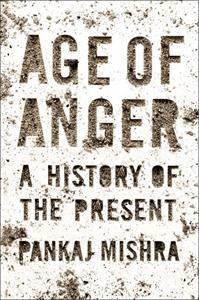
Want to learn the ideas in Age of Anger better than ever? Read the world’s #1 book summary of Age of Anger by Pankaj Mishra here.
Read a brief 1-Page Summary or watch video summaries curated by our expert team. Note: this book guide is not affiliated with or endorsed by the publisher or author, and we always encourage you to purchase and read the full book.
Video Summaries of Age of Anger
We’ve scoured the Internet for the very best videos on Age of Anger, from high-quality videos summaries to interviews or commentary by Pankaj Mishra.
1-Page Summary of Age of Anger
Overview
The world is in a state of confusion. Many don’t understand how we got here or what globalization has to do with it all. However, if you look closer, there have been various signs over the last few hundred years indicating where we would end up one day.
There are many reasons for our current state of affairs. They range from the failed promises of the Age of Enlightenment to misplaced blame on religion by some in global politics. The following key points will help you understand how we got here and where we can go from here.
The French philosopher Rousseau was influential in shaping the world, and his ideas are still relevant today. He believed that our society is failing because of amour propre (self-love) and ressentiment (resentment). The author also believes that liberal capitalism is a failure.
Big Idea #1: Societal upheaval and anger have been present for many centuries.
Western society is built on the principles of Enlightenment. If we’re going to understand modern problems, we need a history lesson.
The Enlightenment was a movement in the 18th century that focused on science, reason and art. It also advocated for freedom from religion. People who followed these teachings claimed to be equal to everyone else and as influential as everyone else. However, it later became clear that simply embracing those ideas wasn’t enough; people didn’t live up to their claims of equality.
During this time, the society was becoming more competitive. However, it only revealed to people how unequal things were. The circulation of these rational Enlightenment principles did nothing but make things clearer to everyone and reveal societal unfairness.
This is true today: the middle class and working class are still suffering, which makes them upset.
People are disillusioned and cynical about the world. They’ve lost faith in their leaders, who can’t seem to solve their problems. So, they’re turning to strong leaders for answers—Napoleon and Trump are recent examples of this phenomenon. However, people’s desire for freedom has always been present; it just hasn’t been met by those in power. In short, while the ideas behind the Enlightenment were exciting and powerful, they weren’t practical enough to work in real life situations.
Big Idea #2: Ressentiment and amour-propre result in an aggressive and individualistic outlook on the world.
It is easy to notice when people are angry at the world. They seem to be only motivated by their own advancement and don’t care about others who have to pay for it. This phenomenon was first described in the 19th century by a Danish philosopher named Søren Kierkegaard, who used the term ressentiment. It refers to how those who appear successful push back against society’s expectations of them.
It is a pertinent idea these days. People are tired of being scolded for not conforming, and they lash out at those who tell them what to do and how to think. This was true in the eighteenth century as well, when people were sick of being told what to do by intellectuals.
There’s another concept to consider: amour-propre, which describes an individual’s preoccupation with their own worth and appearance.
The concept of amour-propre was developed by Jean-Jacques Rousseau. It is one half of a contrasting pair with the other being amour de soi, or self love. Amour-propre is dependent on others opinions and therefore can be fickle in nature.
People are more anxious than ever about their image online. Their focus is on the self, so they’re selfish and combative. This can harm society as a whole, but people might not even realize that what they’re doing is harmful.





